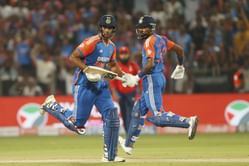Personal Information
| Full Name | Shivam Dube |
| Date of Birth | June 26, 1993 |
| Age | 32 Years |
| Nationality | Indian |
| Birth Place | Mumbai, Maharashtra, India |
| Height | 6 ft 0 in |
| Current Team(s) | |
| Role | All-rounder |
| Batting Style | Left-hand Bat |
| Bowling Style | Right-arm Medium |
| Past Team(s) | |
| Jersey No. | 25 |
| Family | Rajesh Dube (Father), Anjum Khan (Wife) & Ayaan (Son) |
Most Recent Matches
| Match | R | BF | 4s | 6s | S/R | O | R | W | E/R |
|---|---|---|---|---|---|---|---|---|---|
| PAK vs IND | 33 | 22 | 2 | 2 | 150.00 | 3 | 23 | 0 | 7.67 |
| IND vs BAN | 2 | 3 | 0 | 0 | 66.67 | 1 | 10 | 0 | 10.00 |
| PAK vs IND | 0 | 0 | 0 | 0 | 0 | 4 | 33 | 2 | 8.25 |
| IND vs OMA | 5 | 8 | 0 | 0 | 62.50 | 3 | 31 | 0 | 10.33 |
| PAK vs IND | 10 | 7 | 0 | 1 | 142.86 | 0 | 0 | 0 | 0 |
Batting Stats
View All| Game Type | Mat | Inn | R | BF | NO | Avg | S/R | 100s | 50s | H | 4s | 6s | Ct | St |
|---|---|---|---|---|---|---|---|---|---|---|---|---|---|---|
| ODIs | 4 | 4 | 43 | 48 | 0 | 10.75 | 89.58 | 0 | 0 | 25 | 3 | 2 | 1 | 0 |
| T20Is | 40 | 29 | 548 | 397 | 10 | 28.84 | 138.03 | 0 | 4 | 63 | 37 | 29 | 15 | 0 |
| T20s | 174 | 155 | 3450 | 2432 | 43 | 30.8 | 141.85 | 0 | 16 | 95 | 212 | 209 | 55 | 0 |
| LISTAs | 60 | 44 | 1089 | 994 | 14 | 36.3 | 109.55 | 1 | 3 | 118 | 64 | 63 | 18 | 0 |
| FIRSTCLASS | 25 | 40 | 1541 | 2211 | 5 | 44.02 | 69.69 | 4 | 9 | 121 | 158 | 56 | 8 | 0 |
Bowling Stats
View All| Game Type | Mat | Inn | O | R | W | Avg | E/R | Best | 5w | 10w |
|---|---|---|---|---|---|---|---|---|---|---|
| ODIs | 4 | 4 | 17.5 | 106 | 1 | 106 | 5.94 | 1/19 | 0 | 0 |
| T20Is | 40 | 28 | 57.3 | 523 | 18 | 29.05 | 9.09 | 3/4 | 0 | 0 |
| T20s | 174 | 90 | 205.1 | 1819 | 59 | 30.83 | 8.86 | 3/4 | 0 | 0 |
| LISTAs | 60 | 55 | 328.0 | 1736 | 42 | 41.33 | 5.29 | 3/21 | 0 | 0 |
| FIRSTCLASS | 25 | 40 | 455.2 | 1260 | 58 | 21.72 | 2.76 | 7/84 | 3 | 0 |
Popular Players
Shivam Dube Videos
Shivam Dube: A Brief Biography
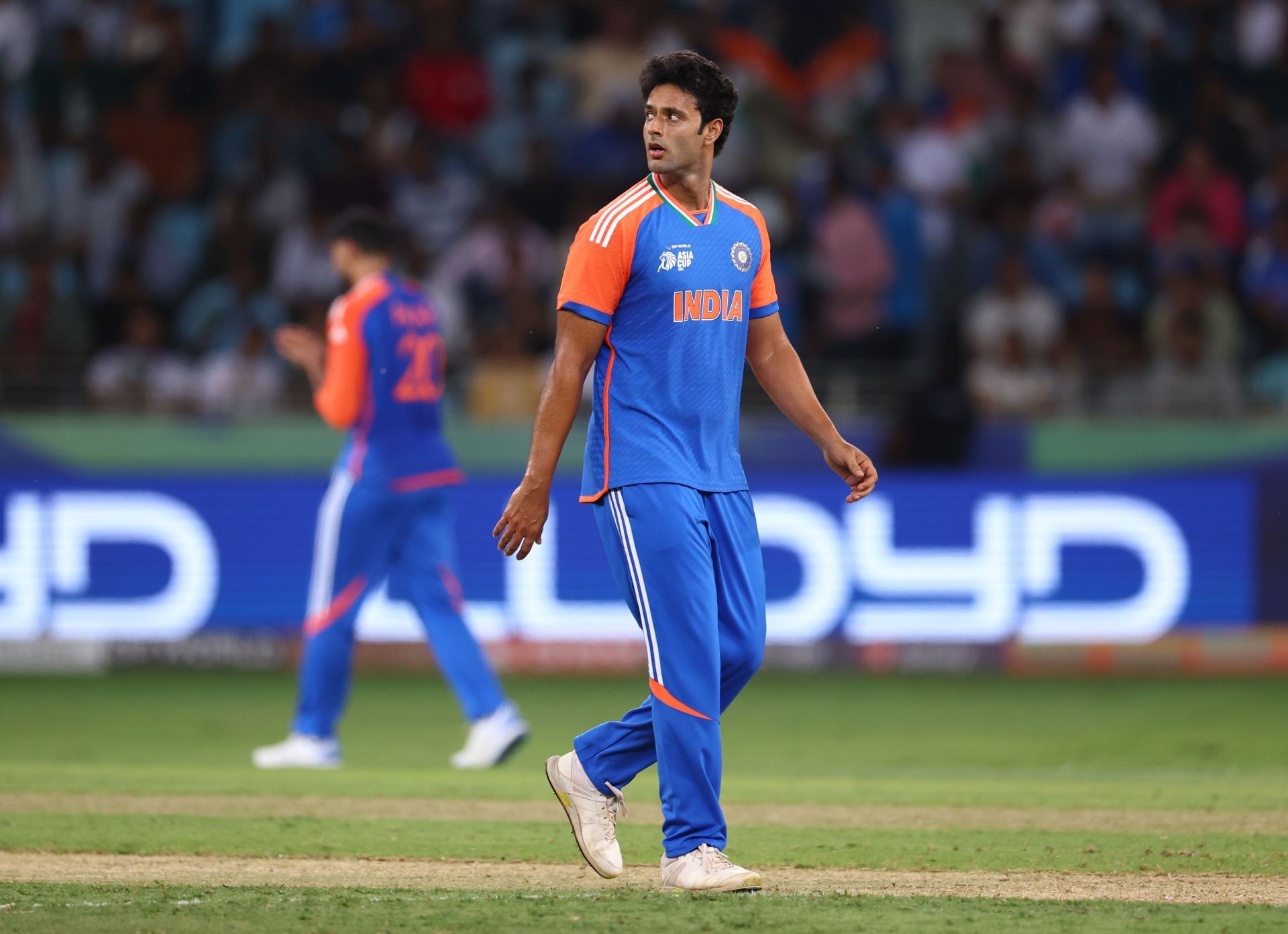
A batting all-rounder, Shivam Dube was born on June 26, 1993, in Mumbai, India, and nearly left cricket at the age of 14 before making a comeback in the Mumbai U-23 team at the teenage age of 19. The 6-foot-tall Mumbai all-rounder is a right-arm medium pacer and a left-handed batsman.
Shivam Dube: Over the years
| Year | Age | Achievement |
| 2016 | 22 | Made T20 debut for Mumbai |
| 2017 | 23 | Made List-A debut for Mumbai |
| 2017 | 24 | Made First-class debut for Mumbai |
| 2018 | 25 | Won Vijay Hazare Trophy 2018-19 |
| 2018 | 25 | Bought by Royal Challengers Bangalore (now Royal Challengers Bengaluru) for INR 5 crores |
| 2019 | 25 | Made IPL debut against Chennai Super Kings |
| 2019 | 26 | Made T20I debut against Bangladesh |
| 2019 | 26 | Made ODI debut against the West Indies |
| 2021 | 27 | Bought by Rajasthan Royals for INR 4.4 crores |
| 2021 | 27 | Won Vijay Hazare Trophy 2020-21 |
| 2022 | 28 | Bought by Chennai Super Kings for INR 4 crores |
| 2022 | 29 | Won Syed Mushtaq Ali Trophy 2022-23 |
| 2023 | 29 | Won the Indian Premier League 2023 |
| 2024 | 31 | Won ICC T20 World Cup 2024 |
Shivam Dube Records
Involved in the highest partnership for the third wicket with Robin Uthappa (165)
Fastest Indian to reach 100 sixes in the Indian Premier League (IPL)
Fourth Indian to score a half-century and take a wicket in the same match
Shivam Dube Awards
Lala Amarnath Award for Best All-rounder in Ranji Trophy 2018-19
Shivam Dube Career
Shivam Dube has had a rollercoaster of a career so far. From the highest of highs to the lowest of lows, the all-rounder has seen it all and borne the brunt.
Shivam Dube Domestic Career
Shivam Dube hogged the limelight when he peeled off five sixes in five balls off left-arm spinner Swapnil Singh on December 17 on the final day of their Ranji Trophy match against Baroda. It was the second time he had scored five sixes in an over, after doing it against Pravin Tambe in the T20 Mumbai League in March.
Dube played junior cricket for his state before making it to the senior team in domestic cricket. Dube made his List-A debut for Mumbai in the Vijay Hazare Trophy in February 2017 against Rajasthan in Chennai. He made his Twenty20 debut in January 2016 for Mumbai during the Syed Mushtaq Ali Trophy. Dube’s first-class debut came in December 2017 when he played for Mumbai in the Ranji Trophy against Karnataka. In the first innings, he took his maiden five-wicket haul in first-class cricket.
In January 2020, Dube won the Lala Amarnath award for the best all-rounder in the Ranji Trophy 2019-20 season at the BCCI Domestic Awards. He was a part of the Mumbai squad that won the Vijay Hazare Trophy 2018-19, 2020-21 season, and the Syed Mushtaq Ali Trophy 2022-23.
Shivam Dube IPL Career

Just a day before the 2018 IPL auction, Shivam Dube caught the attention of the nation by plundering five sixes in five balls off left-arm spinner Swapnil Singh on December 17 on the final day of their Ranji Trophy match against Baroda. The auction held the very next day in Jaipur saw the uncapped player garnering a lot of attention.
Eventually, he was picked by Royal Challengers Bangalore (now Royal Challengers Bengaluru) for a whopping INR 5 crores. He did not get many chances in IPL 2019 and had a below-par IPL 2020, where he managed to score only 129 runs at an average of 18.42 and a strike rate of 122.85. However, he managed to pick up 4 wickets in that season with the ball.
The Rajasthan Royals signed Shivam Dube for INR 4.40 crores in the IPL 2021 auction. Barring a match-winning unbeaten 64 against eventual champions Chennai Super Kings (CSK), Dube struggled to get going in that season as he scored 230 at a strike rate of 119.17 in 9 matches.
The Mumbai all-rounder was acquired by the Chennai Super Kings in the IPL 2022 mega auction for INR 4 crores. He started showing glimpses of his true potential as he smashed a couple of half-centuries, scoring 289 runs in 11 games at an impressive strike rate of 156.22. He stitched the highest partnership for the third wicket with Robin Uthappa (165 runs) against RCB and registered his career-best IPL score of 95 not out.
Dube had his career-best season in IPL 2023 when he helped CSK win their fifth title by being a vital cog in the middle order. He amassed 418 runs in 16 matches at a healthy average of 38 and a strike rate of 158.33.
Batting:
Bowling:
Shivam Dube International Career
Though Shivam Dube made his international debut in 2019, he had to wait to get a long run to prove his mettle in the international circuit. He had a substandard start to his international career, but staged a comeback to the Indian team after his IPL exploits.
Shivam Dube ODI Career
Shivam Dube played his maiden ODI on December 15, 2019, against the West Indies in Chennai. Dube had a forgettable debut as he scored a measly 9 runs before being scalped by Keemo Paul. He did not fare much better in the bowling department either, as the Mumbai all-rounder was plundered for 68 runs in 7.5 overs. After a gap of nearly five years, Dube returned to the Indian ODI squad for India’s tour of Sri Lanka in 2024.
Batting:
Shivam Dube T20I Career
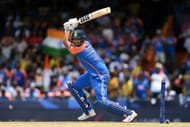
Shivam Dube made his T20 debut against Bangladesh on November 03, 2019, and made an impact in the series decider. With the series tied 1-1, India gambled in Nagpur by picking just five bowlers, including Dube, who had bowled a mere three balls on his T20I debut in Delhi, and then just two overs in the second match in Rajkot.
In Nagpur, with the series on the line, Dube teamed up with Deepak Chahar and triggered a game-changing Bangladesh collapse. Dube had leaked 23 runs in his first two overs, and when he returned to the attack for the 14th over, Bangladesh needed 65 from 42 balls with seven wickets in hand, with half-centurion Mohammad Naim and the vastly experienced Mushfiqur Rahim in the middle.
Dube struck with the first ball of his new spell, tricking Mushfiqur Rahim with a slower cutter and having him chop on for a golden duck. Then, in his next over, he nailed an off-stump yorker to get rid of Naim for 81. This was the same game in which Deepak Chahar took record figures of 6 for 7 and created a world record. India won by 30 runs, and Dube finished with figures of 3 for 30. It was only for the sixth time in 20 T20 games that he finished his quota of four overs.
However, the euphoria of success plateaued when India toured New Zealand at the start of the year. Playing in the 5th T20I of the series, Shivam Dube was belted for 34 runs by the duo of Ross Taylor and Tim Seifert in the tenth over of the second innings during the fifth T20I. The 34 runs conceded by Dube in the over is now the second most expensive over bowled in the history of the format, behind Stuart Broad’s 36 runs.
On the back of his IPL exploits, Dube staged a return to the national team when he was drafted into the Indian squad for the ICC T20 World Cup 2024.
Batting:
Bowling:
Shivam Dube Family
Shivam Dube’s father is Rajesh Dube, and his mother is Madhu Dube. Shivam Dube married his long-time girlfriend, Anjum Khan, on July 16, 2021. On February 13, 2022, he had a double treat when the Chennai Super Kings bought him in the IPL 2022 mega auction, and he was blessed with a baby boy named Ayaan on the very same day.
Shivam Dube House
According to MagicBricks, Shivam Dube resides in a lavish apartment in Mumbai.
Shivam Dube Salary
Shivam Dube received a salary of 12 crore (INR) for the 2025 season. Shivam Dube is a member of the Central Contract Grade C of the BCCI. As a result, he receives INR 1 crore in pay annually.
FAQs on Shivam Dube
A. Shivam Dube made his international debut in a T20I against Bangladesh on November 3, 2019.
A. Shivam Dube has represented Royal Challengers Bangalore (now Royal Challengers Bengaluru), Rajasthan Royals, and Chennai Super Kings.
A. Shivam Dube scored an unbeaten 95 against Royal Challengers Bangalore (now Royal Challengers Bengaluru) in IPL 2022.
A. Shivam Dube won the ICC T20 World Cup in 2024 with the Indian cricket team.


































































































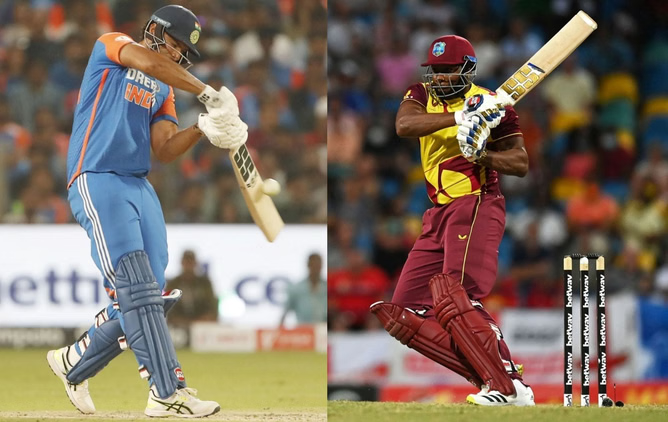
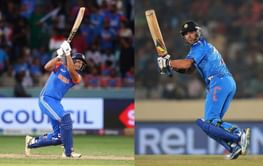
![Team India all-rounder hilariously lifts miniature trophy to celebrate Asia Cup 2025 win with family [Watch]](https://staticg.sportskeeda.com/editor/2025/10/ee8fd-17592917046899-1920.jpg?h=166)

